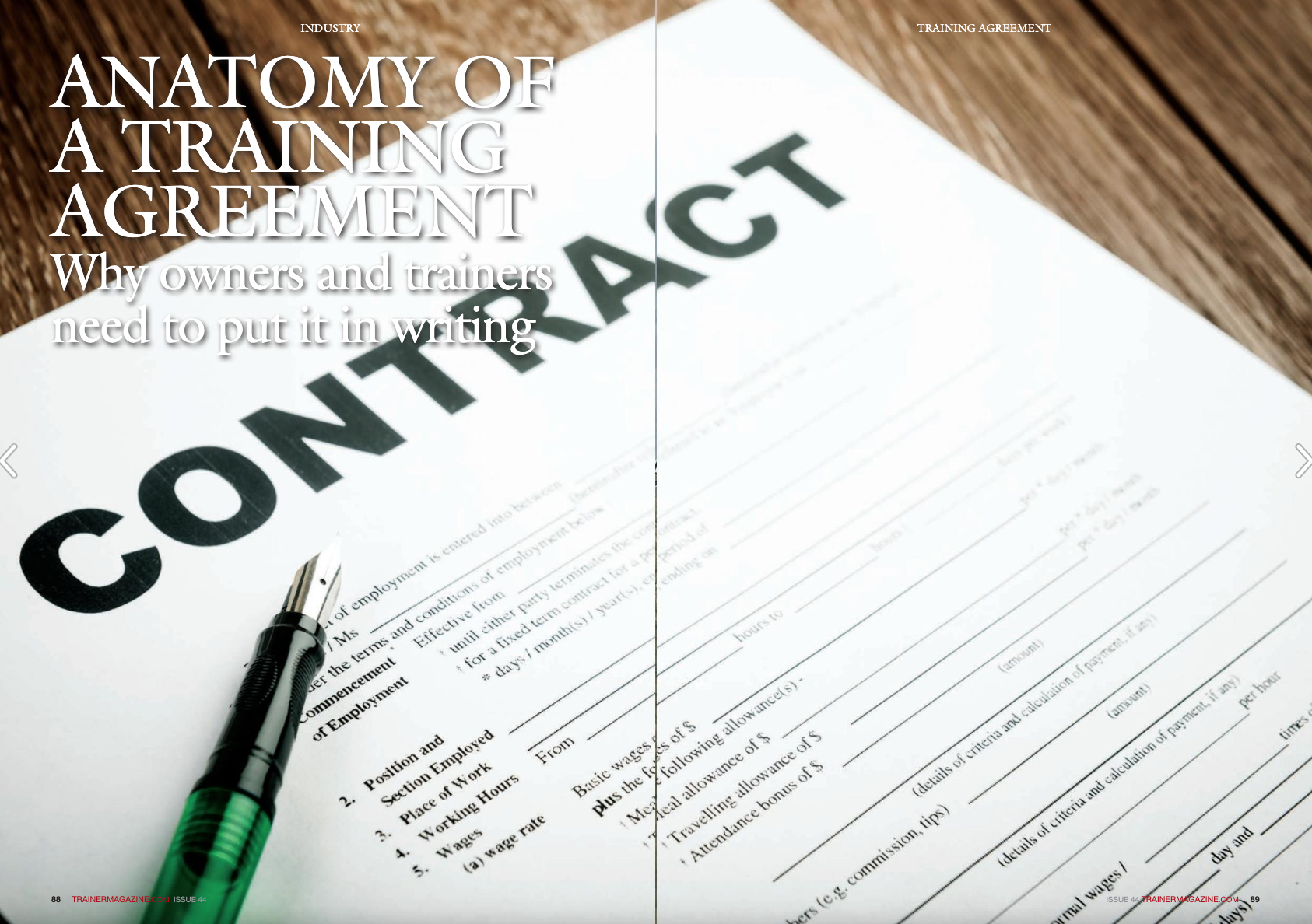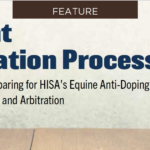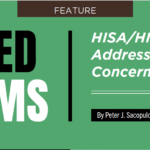Written by Peter J. Sacopulos. First published in North American Trainer issue 44 – May – July 2017
A new owner with a promising Thoroughbred is looking for a good trainer. She inquires at the track and is referred to a trainer that has a reputation for developing winners. The two meet at the stable and agree to fees, veterinarian and farrier care, race commissions, and schedule a date and time to begin training. Is this a done deal? Unfortunately for many owners and trainers, it is.

TRAINER’S AGREEMENT CHECKLIST:
- Parties – The names of all parties involved – owner(s) and trainer(s).
- Horses – The full names of all horses that will be trained under the agreement. Including insured amounts, carriers, and contract information for each.
- Ownership – Describe the ownership, title/registration, and lease/management disposition of each horse. The name and address of the individual, entity, or syndicate holding full title and registration should be listed.
- Payment for Training Services – Describe the trainer’s base fee, per day, plus any additional fees and expenses that may be required (and which will be detailed later in the agreement). State that the daily rate x 30 days is billable to the owner at the end of the billing period, which is typically one month. A good agreement lists what is included in the fees, payment terms, and payment methods. (i.e. check, credit card, transfer, etc.) It can also state that fees may change subject to written notice.
- Authorized Agent – This essential component ensures that the trainer is the authorized agent who may contact a veterinarian or farrier to arrange for services. Typically, a maximum, per incident approval amount is specified in the contract. The clause should indicate that the trainer has the authority to authorize emergency care in the case that the owner is not available, and a maximum amount that the trainer may approve without owner consent.
- Insurance – Describe the coverage and limits of the trainer’s lability insurance, which covers harm to people and property. However, as a general rule, a trainer’s liability policy typically does not protect the owner against losses due to fire, theft, death, etc. arising from injuries or accidents. (See INDEMNIFICATION, below)
- Limitation of Liability and Indemnification – This section holds the trainer harmless for equine sickness, disease, theft, death, or injury arising out of the boarding or training of the animal – except in the event of willful negligence. There are often state-specific requirements for this clause. It is recommended that an attorney who understands state requirements be consulted.
- Acceptance – This provision makes it clear that the contract is not effective until both the owner and the trainer have signed.
- Veterinarian and Farrier Care – The trainer agreement should include a provision that states the trainer is authorized to arrange for routine care, such as vaccinations, Coggins test, dental care, hoof care, etc. List all services that the trainer is authorized to schedule. The agreement should also state that the trainer is authorized to approve emergency care and surgery. If the owner is not available, up to a certain amount. Specify this amount in the contract.
- Commissions – Clarify whether the owner and/or trainer share a race winnings or for facilitating the sale of a horse, and if so, the commission percentage. For race winnings, clarify whether there is a variance in the percentage if it is a claiming race, a stakes race, or an allowance race.
- Billing – Specify when bills are due (typically, within 30 days of billing date), and if interest is charged for overdue balances.
- Lien – This provides an important protection to trainers, when owners are delinquent in their payments. The clause should explain that if the owner fails to pay his/her bills, after a certain amount of time (say, 45 days), the trainer has the right to attach a lien to the horse, in the form of a liveryman lien or adjuster lien, and may ultimately, having secured the lien, sell the horse to recover losses.
- Insurance – Specifies who is responsible for insuring the animal, and at what coverage amount.
- Termination and Waiver – Clarifies how the agreement may be terminated. In most cases, the agreement has a 30-day termination provision, after a written notice is provided.





